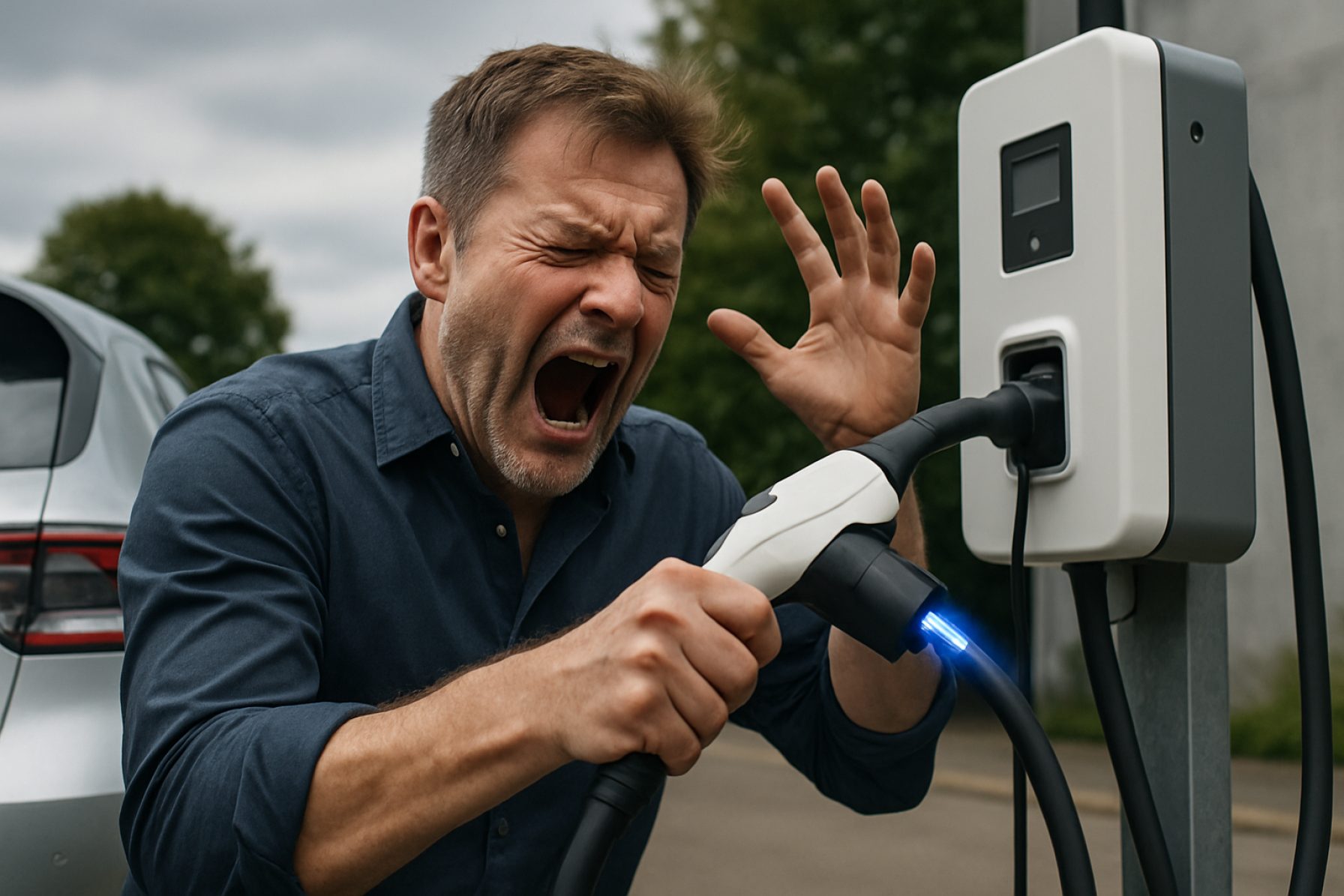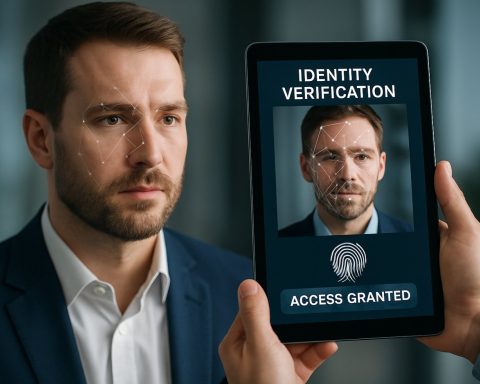- EV charging technology and billing errors can dramatically impact users, as highlighted by a $515 million overcharge incident.
- Blink Charging rapidly expands with over 100,000 stations and new manufacturing capacity, aiming for U.S. market leadership.
- Technical vulnerabilities, cloud-based platform issues, and unreliable customer service reveal growing pains in the public EV charging sector.
- Blink faces increasing bankruptcy risk, downsizing, and leadership changes despite strong revenue growth and aggressive expansion.
- Trust and reliable customer support are critical as more drivers adopt EVs; seamless, error-free charging must be prioritized for sustained growth.
- Industry leaders like Tesla set high standards for charging reliability, emphasizing that consumer confidence is foundational to the future of electric vehicles.
A crisp evening and a near-empty battery—what should have been a quick recharge catapulted one electric vehicle driver into the financial stratosphere. Instead of the typical few dollars to fill up on electricity, the bill soared to a mind-boggling $515 million, exposing cracks not only in the technology fueling the nation’s EV revolution, but also in the burgeoning customer service infrastructure behind it.
Public charging should be as simple as plugging in and walking away. That’s the promise echoing through ads, glossy brochures, and Blink Charging‘s own website. Instead, this driver faced an ordeal: a billing system gone haywire, a chatbot with a Kafkaesque sense of direction, and a support line where Hold Music replaces hope. For nearly six kilowatt-hours—less power than a household clothes dryer uses in an afternoon—the charge, quite literally, could have bought Blink’s entire publicly traded company several times over.
The debacle—while absurd—serves as a canary in the coal mine for a sector in hypergrowth. Blink Charging boasts more than 100,000 stations worldwide, with an aggressive push to dominate the U.S. market. Their sleek blue-and-white chargers have become landmarks in urban garages and apartment complexes, offering Level 2 charging for commuters and tenants alike. Their expansion is rapid, outpacing competitors and supported by the opening of a new Maryland factory that aims to triple manufacturing output.
Yet scale reveals, rather than hides, the vulnerabilities simmering beneath the surface. The tech—a proprietary network riding on a cloud-based backbone—broke, and when it broke, it left a paying customer stranded. The AI meant to improve response times instead rerouted a million-dollar complaint to the wrong department, leaving the human behind the wheel with more questions than answers.
While investors feast on press releases touting surging revenue—service income alone soared by 32% last year—Blink’s financial footing is getting shaky. Recent assessments peg its risk of bankruptcy at a staggering 70%, underscored by a company-wide reduction in workforce and the planned replacement of its chief financial officer. It’s a paradox familiar to the world of disruptive startups: too big to be amateur, too new to be infallible.
Meanwhile, the EV market quickens its pace. Tesla continues to set the gold standard for seamless charging, its Supercharger network revered for reliability. Yet even the biggest names in the game can trip over code or customer support. The difference, in moments like this, might come down to how quickly wrongs are righted, how transparently errors are addressed, and—most critically—how companies treat those suddenly staring at a life-altering bill.
Beneath the memes and Reddit threads, a sobering truth emerges: electrification’s promise rides not just on speed or convenience but on trust. When plugs connect and electrons flow, drivers are extending that trust with every swipe, tap, and charge.
The takeaway? Progress isn’t just in the rollout of shiny new stations but in the assurance that if and when disaster strikes—be it a stubbed toe or a half-billion-dollar glitch—there is a responsible human ready to fix it. Until then, even the most routine EV charge might carry, lurking in its code, the specter of shock: financial, technical, and existential.
The next decade may see EVs dominate the highways, but the race for consumer confidence is only beginning. Blink—and every company electrifying the future—must move beyond grand ambitions and ensure their systems are as resilient as the cars they power. Only then will the age of electric driving truly arrive, plug by plug, and trust restored—one customer at a time.
This $515 Million EV Charging Glitch Exposes Shocking Risks—And Here’s How to Protect Yourself
# The $515 Million EV Charging Bill: Unpacking the Real Dangers Behind Electrification’s Growing Pains
What Really Happened: A Billing Fiasco
A jaw-dropping $515 million credit card charge for less than 6 kilowatt-hours of electricity at a public charging station revealed the underbelly of the electric vehicle (EV) ecosystem. The incident, involving Blink Charging, wasn’t just a once-in-a-lifetime glitch—it’s a wakeup call for the entire industry. When a simple top-up morphs into a life-altering debt crisis, all eyes turn to the technology, customer service, and business security powering the EV revolution.
—
Surprising Facts You Need to Know Beyond the Headlines
1. EV Charging Glitches Are More Common Than Most Realize
– Public EV charging errors, while not always catastrophic, frequently result in double billing, overcharges, or failed transactions (according to a 2023 J.D. Power EV Experience study).
– Non-standardized payment platforms across various networks increase the risk of billing mismatches.
2. Payment Security Remains a Major Blindspot
– Many networks, including Blink, still rely on third-party billing SDKs and cloud authentication, opening the door to rare but devastating software or cybersecurity mishaps.
– Card skimming and data breaches have been reported at both small and large networks, so always check your statement regularly.
3. Customer Service in the EV Industry Is Lagging
– Blink and other upstart charging providers are rapidly expanding, but their customer support often depends on chatbots with limited escalation procedures and overwhelmed human operators. This trend was highlighted in a 2024 National Renewable Energy Laboratory survey.
4. Market Instability Is a Threat to Your Charging Experience
– Blink is confronting major business headwinds, including a 70% bankruptcy risk assessment (Data: Macroaxis, 2024). This could mean reduced station maintenance and support for users, potentially leaving drivers stranded.
—
How-To: What To Do If You’re Overcharged at an EV Charging Station
1. Take Immediate Photos: Document the charger display, payment confirmation, and receipt.
2. Contact Customer Support: Use both the app and phone—keep a log of your communication attempts and reference numbers.
3. Notify Your Credit Card Company: Initiate a dispute ASAP—federal law protects you from fraudulent or erroneous charges.
4. File a Complaint with Consumer Protection Agencies: In the U.S., you can contact the FTC or the Better Business Bureau.
5. Alert the Community: Report errors on sites like PlugShare or forums—it creates pressure for swifter resolutions and helps protect other drivers.
—
Real-World Use Cases & Comparisons
Tesla Supercharger vs. Blink Charging
– Reliability: Tesla’s Supercharger network is widely recognized as the industry gold standard, with satisfaction scores over 80% versus Blink’s sub-60% (J.D. Power, 2023).
– Payment: Tesla locks charges to your account and notifies you of each charge, making errant billing nearly impossible.
– Customer Service: Tesla operates 24/7 multilingual phone support; Blink relies heavily on digital channels.
Charging Network Pros & Cons
| Charging Network | Pros | Cons |
|——————–|———————————–|—————————————|
| Tesla Supercharger | Fast, reliable, user-friendly | Restricted mainly to Tesla owners |
| Blink Charging | Expanding locations, affordable | Customer support, billing glitches |
| ChargePoint | Wide coverage, app integration | Price variability, spotty uptime |
| EVgo | High power, partner discounts | Premium pricing, variable station age |
—
Market Forecasts & Industry Trends
– U.S. EV Charging Infrastructure Spending Is Surging: The federal government earmarked $7.5 billion for EV charging networks under the Bipartisan Infrastructure Law.
– Industry Consolidation: Expect mergers and acquisitions as smaller or unstable players struggle (e.g., Blink’s financial risk).
– Reliability Will Become a Key Differentiator: Consumer confidence in charging payment security and issue resolution may shape winners and losers in this fast-growing sector.
—
Controversies & Limitations
– Limitation of Support AI: AI-driven customer support is only as good as its data and programming. When resolving edge cases like extreme billing errors, human intervention is still irreplaceable.
– Network Fragmentation: Lack of universal standards forces drivers to juggle multiple accounts and payment methods, increasing the risk of confusion and billing errors.
– Sustainability Concerns: Many networks tout their green credentials, but manufacturing and maintaining thousands of chargers have a carbon footprint—making ongoing sustainability innovation crucial.
—
Pressing Questions Readers Have
Q: How likely am I to encounter a major EV billing error?
A: While extremely high dollar errors are rare, minor overcharging or failed refunds are relatively common. The risk increases with less mature networks and during periods of rapid expansion.
Q: Are my payment details safe at public charging stations?
A: Security protocols vary. Look for stations with PCI DSS compliance and reputable brands. Never use public Wi-Fi when managing payment details at a charging station.
Q: What happens if a charging network goes out of business?
A: You may lose access to pre-paid balances or support for station issues. Stick to networks with proven stability and broad coverage.
—
Actionable Quick Tips for EV Drivers
– SET CHARGING ALERTS: Use app notifications or set a phone timer to monitor every session.
– CHECK YOUR BILL REGULARLY: Always compare your charger receipts with your credit card statement.
– KNOW YOUR NETWORKS: Prefer established providers like Tesla or major partners of national infrastructure programs.
– REPORT & DOCUMENT EVERY ERROR: Early action increases your chances of a successful resolution.
– Stay Informed: Follow credible news and regulatory updates on EV infrastructure for emerging risks and best practices.
—
Final Word
As the electric vehicle sector grapples with massive growth pains, your vigilance is your best defense. Don’t just plug and play—plug, pay attention, and advocate for transparency and customer care. The road to an electric future is bright, but the trust between drivers and charging providers will determine how smoothly we get there.
🔌 For more information and updates on EV charging trends, visit trusted sources such as Blink Charging and Tesla. Stay safe and charged—knowledge is your most powerful battery!














